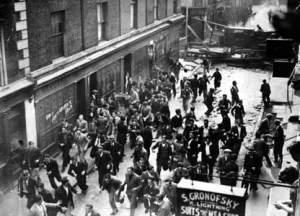Richard Dennis (UCL)
 This paper will explore the emergence of ‘East End’ as a category of description and analysis in fiction and social scientific discourse.
This paper will explore the emergence of ‘East End’ as a category of description and analysis in fiction and social scientific discourse.
Where, exactly (or even approximately!), was the ‘East End’ and what were its social, cultural and geographical attributes? The paper will pay particular attention to the writings of George Gissing, whose reputation as a novelist of slum life has often led to his being associated with the East End; to the relationship between Gissing and other ‘East Enders’, such as Arthur Morrison, Walter Besant and the Rev. Osborne Jay; and to the parallels and interactions between Gissing’s fiction and Charles Booth’s Labour and Life of the People and the associated ‘Descriptive Map of London Poverty 1889’. Of special interest is Gissing’s early novel, The Unclassed. In its first edition as a three-volume novel (1884), the slums that play a prominent role in The Unclassed were situated in Westminster, but by 1895, in revising – mainly abridging – the novel into a single volume, Gissing relocated the slums to the East End, reflecting shifts in both popular perceptions of the East End and ‘real’ ongoing changes in the geography of poverty in London in the 1890s that are also revealed by the 1898–99 revised edition of Booth’s poverty maps.
